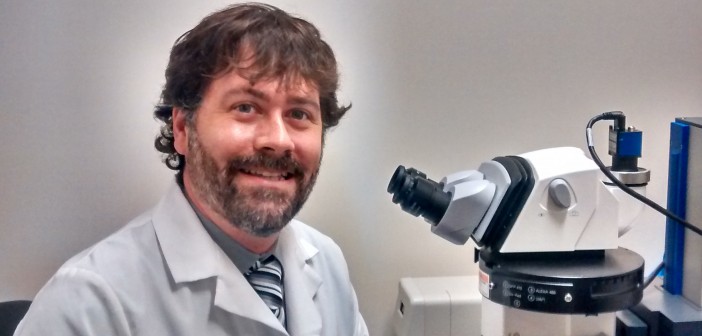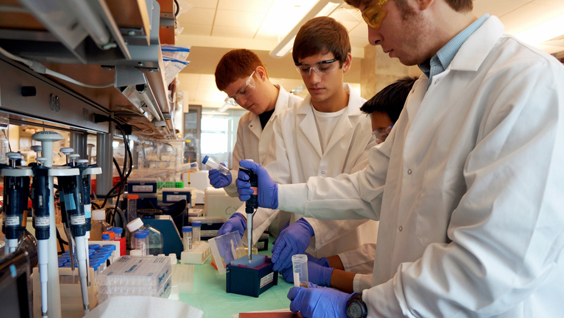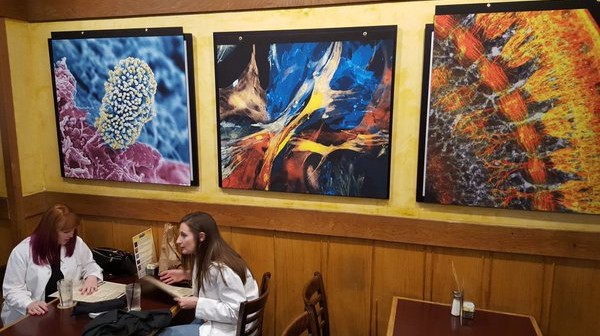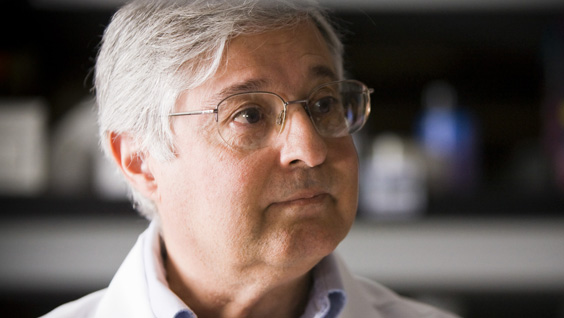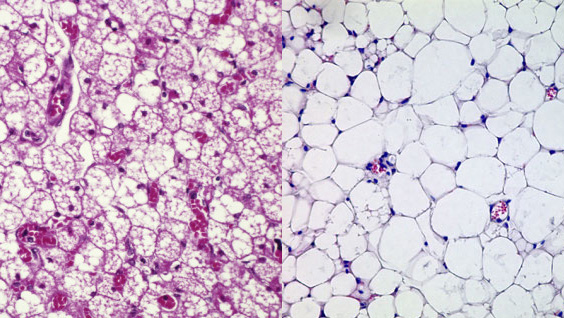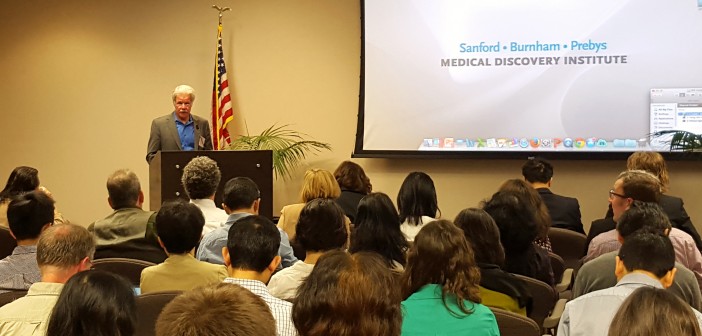This is the first post in a series that will share what past SBP postdocs are doing now.
Louis Lapierre, PhD, was a postdoctoral researcher in the laboratory of Malene Hansen, PhD, associate professor in the Development, Aging, and Regeneration Program from 2008 to 2014, where he studied the molecular mechanisms of aging using the microscopic roundworm C. elegans. Since January 2015, he has been an assistant professor in the Department of Molecular Biology, Cell Biology, and Biochemistry at Brown University. His lab researches the role of lipophagy in aging, the process by which cells recycle fats to enhance longevity.
What did you gain from your postdoc experience at Sanford-Burnham? What was the best thing about doing science here?
Conducting research at Sanford-Burnham was a great stepping-stone in my career development. After my first publication there, because I was in a lab led by an emerging scientist, I had the flexibility to carry out research that I personally cared about, which led to interesting and unexpected findings. Eventually, I obtained independent financial support that was critical for my transition to independence. Importantly, SBP’s location in La Jolla means that it is surrounded by highly skilled researchers and state-of-the-art infrastructure, which makes for a cutting-edge, competitive environment.
How did you find your first job after your postdoc? Was it challenging?
I interviewed for several positions during the first half of 2014. The faculty job search is grueling, but I feel privileged to have gone through it. The main challenge is the outstanding level of competition not only at research-intensive institutions, but also at lower tier schools.
Why do you say participating in the faculty selection process was a privilege?
I think it’s easy to forget that our accomplishments were possible because, at some point, someone believed in us. Receiving support from colleagues and mentors and then being selected for interview by a search committee is a privilege that only a few postdocs get to experience.
What advice do you have for postdocs who hope to find a faculty position?
During your postdoc, plan meticulously to position yourself in line with funding opportunities and aggressively pursue emerging topics. During the job search, understand your value on the market, develop an interesting research program with long-term potential and strategically market yourself at conferences.
What do you enjoy most about your work and why?
I think the most fascinating part of basic research is the possibility of making new and exciting discoveries, and being at the forefront of knowledge. I also find mentoring highly rewarding because I get to make a difference in someone else’s life by building their confidence. This is especially gratifying when I get to work with students who have a passion for science, which is so important to thrive in this competitive environment.
What do you miss most about San Diego and why?
You only realize what you have when you lose it. Leaving San Diego was difficult because I knew nowhere else would be as good. I miss San Diego, not only for its incredible weather and beautiful beaches, but most importantly for the great friends I made there.

